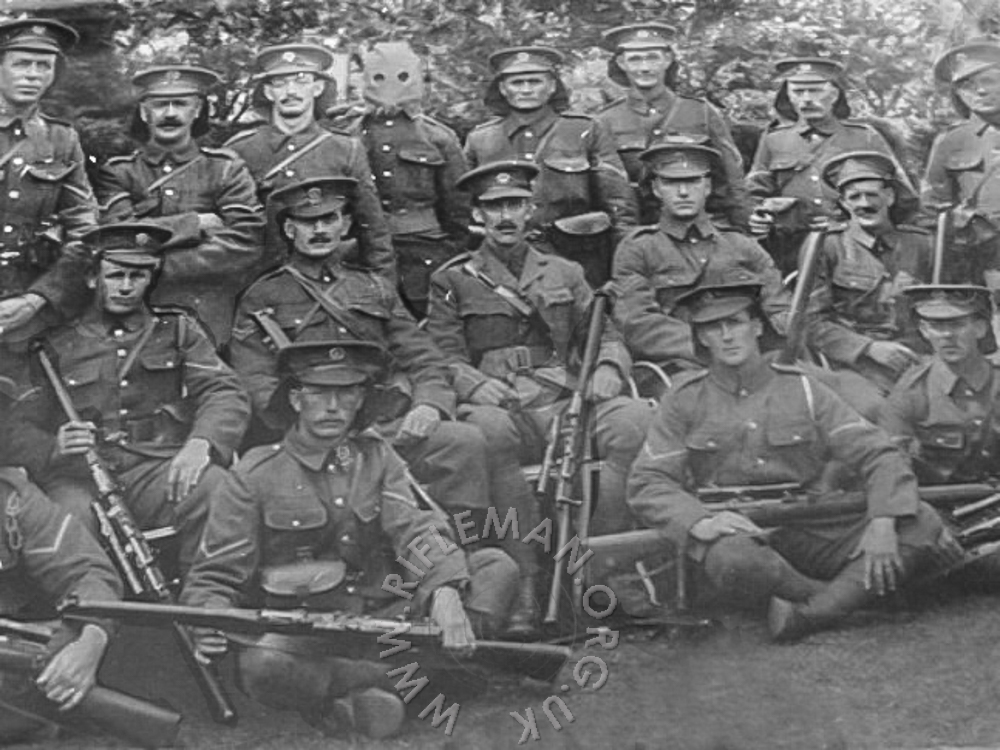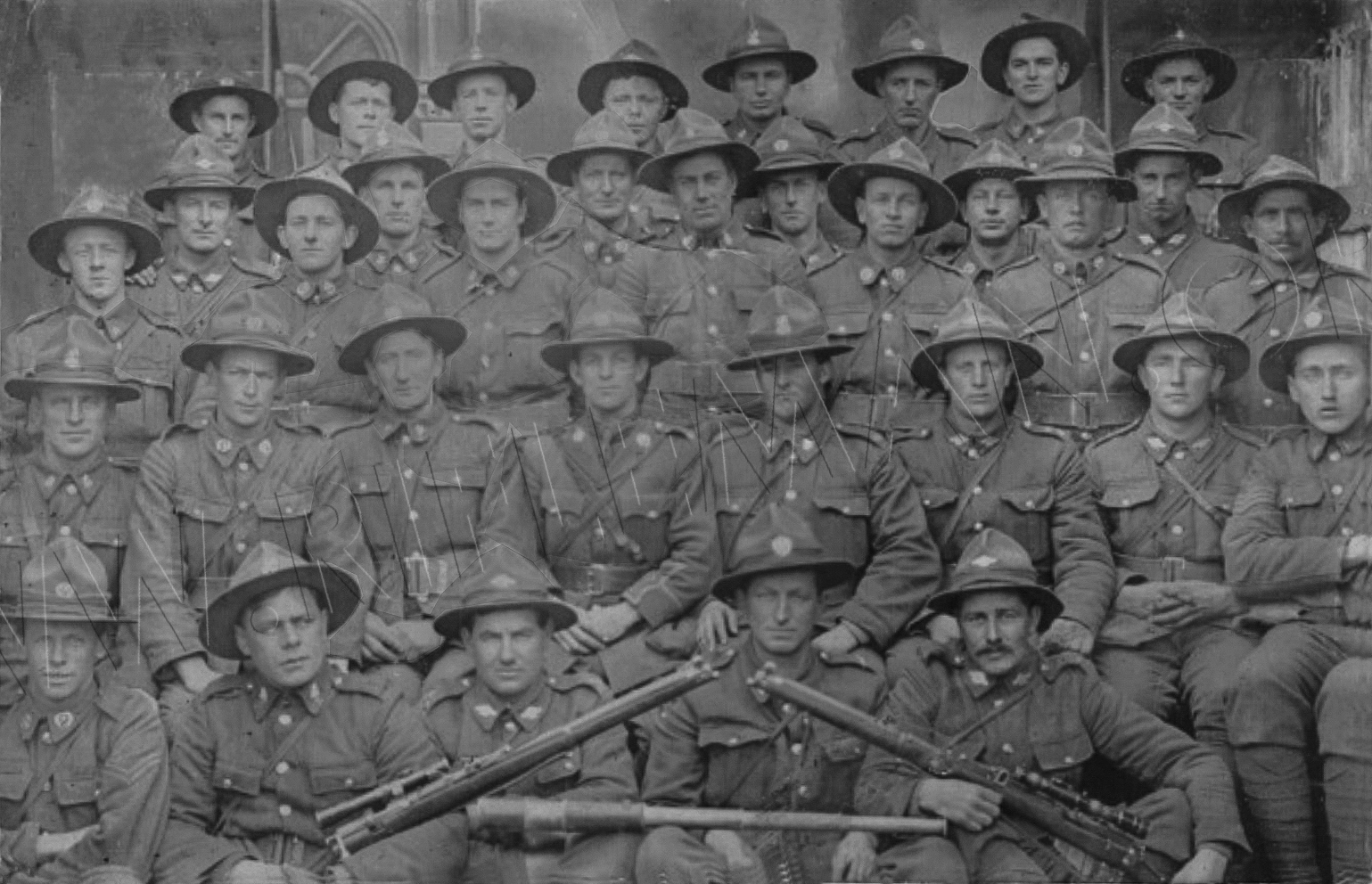See also the main page for the Rifle, Short, Magazine Lee-Enfield
In 1915, when German Mauser rifles mounted with high quality German optics were being used to great effect in the demoralisation of British troops holding the opposing trenches, in the static stalemate of the War at that time, initially the only effective retaliation was by those men who had pre-war target shooting experience. Many of these men brought their own target rifles to the front, and used them with aperture sights, Galilean sights and even a small number of hunting telescopic sights in an attempt to level the playing field.
The Lattey Galilean sights were simply fitted to any S.M.L.E. rifle, but gave a very low magnification and were subject to reflections of ambient light in the open lenses. Whilst offering some of the benefit of telescope for sighting, there was an acknowledged need for a true telescopic-sighted rifle suitable for general issue to properly trained sharp-shooters.
The earliest types of these rifles were assembled in 1916 by such well-known gunsmiths as Alexander Martin, who had considerable experience in 'scoping' expensive hunting rifles for the well-heeled. These companies designed mounts for the Short Lee-Enfield that permitted quick fitting and removal of the telescopes with minimal effect on the rifle's zero; although those issued with such rifles understandably preferred to be sure about their continuing accuracy by leaving the telescopes in place unless removal was absolutely necessary - usually for maintenance or repair.
The rifle below has been fitted with a side-mounted telescope manufactured by the Periscopic Prism Company. The theory of side-mounting was to retain the speedy charger-loading of the rifle with clips of ammunition if the shooter found himself in need of engaging an enemy with rapid fire.
Here you can view every aspect of the rifle.
The next two images can be rotated and zoomed, either as initially loaded or full-screen for higher definition.
Slide cursor < > to rotate, and Click to zoom.
The upper image shows the rifle accompanied by the observer's Scout Regiment spotting telescope on its short tripod stand.
The particularly observant amongst our readers will have spotted an unusual muzzle protruberance. This is a standard .303 inch centre-fire service rifle but, for experimentation with the telescope fitment on a small-bore range, it had been temporarily fitted with a .22 inch rimfire Aiming-Tube and the appropriate bolt with the .22 bolt-head with its offset floating firing-pin.
In practical application, the need for clip-loading by a sharp-shooter or "sniper" in a concealed position was evidently seldom encountered, so over-bore telescope mounts were soon introduced. These obviated the frankly none-too-comfortable positions required to use a side-mounted 'scope, which under some circumstances could even be easier to aim with the left eye of a right-handed firer.
Below: A South African"Sharpshooter" troop of WW1, with their No.1(SMLE) rifles with side-mounted telescopic sights that appear to be of the Periscope Prism Company type, although they would seem to be using the two bases and scope rings mounts of the Purdey type, so the telescopes may even be early Aldis or Watts models. Can you identify them for certain? Even the C.O. has his rifle resting across his left leg into the crook of his arm.

Another telescope used with the SMLE was the Winchester A5 long tube model.
See another South African No.1.Mk.III Lee-Enfield rifle fitted with the A5 'scope.
The Aldis Company designed a fine telescope that was slightly shorter than the usual side-mounted versions, and which had improved light-gathering qualities. A 1916 model preceded the famous 1918 model introduced late in the War, and which was still manufactured and used on the SMLE sniping rifles built in Australia in the Second 1939-45 World War. Australia did not have the machine tools to produce the later No.4 rifle, and continued to manufacture and issue No.1 S.M.L.E. rifles until the end of WWII.
Below: a troop of New Zealand infantry is photographed with their two snipers and observers front and centre. At least some of this troop are known to have served on the Gallipoli Peninsular in the First World War. The rifle on the left is probably fitted with a side-mounted 'scope by E.R. Watts & Sons, as it is too short to be a Periscope Prism Company model; while that on the right carries what is likely to be an Aldis model no.3, which is almost certainly on mounts of the Purdey off-set design. This utilised a pair of separately mounted rings rather than the central single-point system of the P-P & Co. 'scope.

An Aldis over-bore telescope can be seen mounted on a Pattern '14 rifle on our page for the standard issue Enfield Rifle No.3 (P'14).
Click here to access a Chronology of Enfield genre Training Rifles, Adapters & Cartridges
and the Enfield Training Rifles Main Menu page
or Lee-Enfield bolt-head comparisons
Return to: TOP of PAGE
See this website's Raison d'être